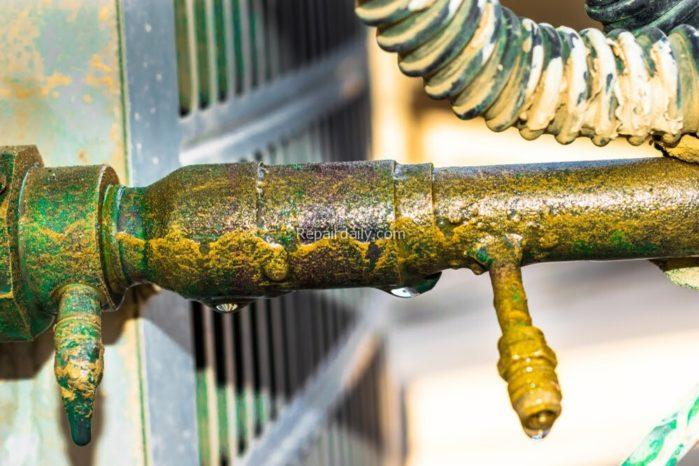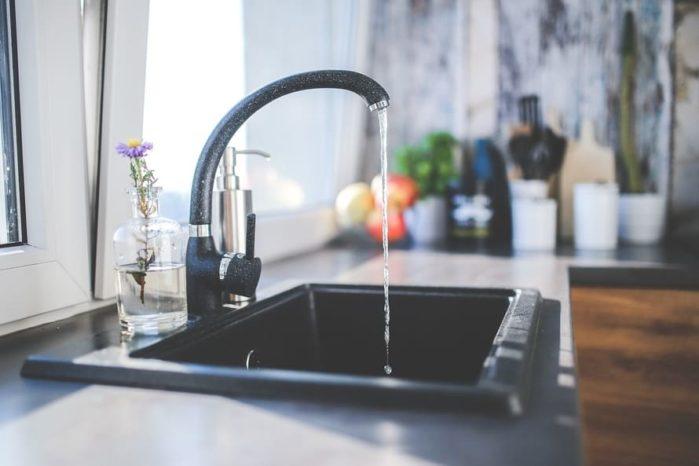
Ways To Check Household Plumbing Fixtures & Appliances



Leaking pipes
Check Household Plumbing Fixtures & Appliances problems occur suddenly. Some plumbing problems are so severe that they can be catastrophic. Inspecting your major plumbing fixtures on a regular basis can assist in spotting and correcting any developing plumbing issues before they end up becoming emergencies.
There are certain areas of concern where more focus should be put when inspecting your household plumbing. These are the kitchen and bathroom.
However, you shouldn’t forget to inspect in other parts of your home such as hose spigots located outside your house and water heaters in the utility area or basement.
Check Household Plumbing Fixtures & Appliances
The Bathroom



leaking pipes
Bathrooms are frequently used by all family members. Thus, they’re prone to many plumbing problems. Inspect these fixtures in your bathroom:
- Toilet: A toilet comes with multiple working parts. Any of its parts can break down or wear out, leading to various problems. To inspect the toilet, start by removing the lid covering the toilet tank and observe what happens when flushing.
If the toilet continues running after flushing instead of shutting off, then it’s wasting water. Such a toilet requires repair.
Also, in case you notice that water is seeping around the base of the toilet, or the toilet rocks a little bit when sitting on it, then it’s a sign that the toilet wax ring sealing the base of the toilet onto the drain is worn out. In this case, you’ll need to replace the toilet wax ring.
- Drains: Sink, shower, and tub drains are prone to hair and soap clogs. You should rather disassemble these drain traps to remove debris instead of waiting for them to become full clogs. Also, it’ll help to snake the areas where drains branch to remove any debris before they result in full clogs.
- Caulk Seals: While the caulk that seals the areas around showers and tubs is not considered as “plumbing”, if the seal fails, it’ll allow some water from the shower or bathtub to seep under the floor or behind the walls, leading to catastrophic water damage.
Thus, you should inspect the caulk seal along the walls and floor on a regular basis to ensure it’s intact at all times. In case you find any gaps, seal them immediately using fresh caulk. It’s also advisable to remove old caulking after some few years and replace it with new, high-quality caulk.
- Faucets: The shower, sink, and tub faucets demand a lot of attention in any bathroom. You should check them for leaks regularly. Replace any faulty cartridges and washers to fix dripping faucets. Here are some incredible kitchen faucet designs available at allorausa.com to inspire your next kitchen upgrade.
Also, the water supply pipes behind the walls can be quite problematic since leaks in them are often hidden. Hidden leaks may lead to major damages before being noticed. Signs of damage reveal these leaks. Also, you can observe how the faucets operate while running water.
In case the water pressure is weak, or the spray pattern is irregular, then it might be a sign of calcium buildup around the aerator. You can remove aerators and clean them manually or soak them in vinegar to remove calcium buildup.
The Kitchen



Single handle kitchen faucet
Another key room that has major is the kitchen. You should inspect all plumbing fixtures in your kitchen at least two times every year.
If you find any problems during the inspection, fix them immediately. Here’re the major kitchen plumbing fixtures you should inspect:
- Faucets:Leaking kitchen faucets are a major plumbing problem. In fact, they’re the most commonly repaired fixtures in the kitchen. A leaking faucet can waste water amounting to dozens of gallons every year. Observe each faucet while operating the lever. Repair any problematic faucets.
- Sink Drains: Kitchen sinks are frequently used. The kitchen sink strainers tend to be prone to leaks. Simply observe the sink P-trap and strainer as the kitchen sink drains water. The sink strainer basket requires replacement if it’s leaking or corroded.
The P-trap requires tightening if it’s leaking. If the sink is draining too slowly, then there might be a blockage building up in the branch drain and P-trap.
Simply disassemble the branch drain and P-trap to clean out any clog. Also, clean the sink drain regularly with a mild drain cleaner to remove any buildup.
- Garbage Disposer- Most problems with the garbage disposer usually occur in the drainage connection areas where the dishwasher discharges to the garbage disposer. They also occur in the section where the garbage disposer connects to the drain.
You should inspect these connections and tighten them if loose. Replace any leaking gaskets. If the garbage disposer has any foul smell, it’s time to clean it. Remember to follow the manufacturer guidelines when maintaining the kitchen garbage disposal.
- Shutoff Valves: These fixtures control water flow to the refrigerator, dishwasher, and faucets. A working shutoff valve should shut off water flow completely once closed.
While inspecting the valves, ensure they operate properly. If they don’t turn off the flow of water completely, then consider replacing them.
- Refrigerator: Any refrigerator that comes with an icemaker and water dispenser require regular filter replacement, as often as twice per year.
If the filter is clogged, it’ll block the smooth flow of water to the icemaker or dispenser. Also, inspect the water hose for any signs of tear and wear. Replace any worn out hose.
- Dishwasher: While inspecting your kitchen, consider listening and observing the dishwasher as it operates. If the dishwasher takes longer to fill than usual, then the hose or shutoff valve controlling it might be faulty.
In case it’s draining slowly than usual, or drain water is retained at the bottom after a wash cycle is complete, then inspect the discharge hose keenly for any pinching or clogs.
Septic Tank and Sewer Line



plumber
Stoppage of flow in the septic tank or sewer line is a serious Household Plumbing Fixtures & Appliances issue that poses health risks. You can prevent this problem by inspecting and maintaining the sewer system regularly. Here’re the main areas of the sewer system that requires regular inspection:
- Vent Pipes: Vent pipes equalize the sewer gases and air pressure in the sewer system. They usually exit the sewer system through the roof.
In case the vent pipes are blocked with ice and snow or debris, the sewer system won’t work effectively.
While inspecting different ways to Check Household Plumbing Fixtures & Appliances, take time to do a thorough inspection on vent pipes for any blockage. You might have several vent pipes, including the main and secondary pipes.
- Maintaining the Septic Tank: If your home has a septic tank, then avoid major problems by inspecting and servicing it regularly. Ensure the tank is pumped out any time it fills up.
Ensure everyone in your home knows the items they shouldn’t dump in the drain. Avoid flushing any food materials.
Also, avoid using bleach-based cleaning agents since they affect the breakdown of waste, something which is essential in a septic tank.
- Maintaining the Sewer System- In case your home is connected to sewer lines belonging to the local municipal, then you can prevent blockages in the main sewer lines by maintaining your sewer system regularly.
If your home experiences periodic sewer stoppage, especially due to tree roots growing through the sewer line, then you can snake the sewer line on an annual basis. This will prevent sewer waste from the problem of backing up.
Hire a professional plumbing company to do the snaking effectively. You can assess whether your sewer line is working effectively by emptying each and every tub and sink simultaneously and checking whether the drains are draining quickly or draining slowly or backing up.
Any backing up or slow draining is a sign of a drain clog. Deal with the clog before it becomes a full blockage.
Plumbing Fixtures around Your Home
Although the sewer system, kitchen, and bathroom comprise of the major Check Household Plumbing Fixtures & Appliances in any home, there’re other fixtures that require periodic inspection. They include:
- Shutoff Valves for Branched Supply Lines: In case your plumbing system has several shutoff valves for controlling different supply lines, inspect them regularly. Replace any faulty valves.
- Water Heater: Check for any signs of leakage in the inlet and outlet pipes of your water heater. You should also check for leakage at the base area of your water heater.
Such leakage is often as a result of a faulty pressure and temperature relief valve. It might also be as a result of a faulty drain valve.
Flush your water heater after some years to remove any sediment that may have collected in the tank. Have the burner that comes with a gas water heater cleaned by an expert.
- Sump Pump: In case your home features a basement that has a sump pit and drainage system under the floor, then ensure it is functioning properly.
To assess its functionality, simply put some water into the basement sump pit until it’s full and check whether the pump is activating to drain the water.
- Checking the Pressure of Water Supply: You should avoid excessive stress on plumbing fixtures by ensuring the pressure of water is safe.
Use a water pressure gauge to test the water supply pressure. In case the pressure appears to be extremely high, then consider repairing or replacing the existing pressure regulator. If you’ve not installed a water pressure regulator yet, then install one.
- Irrigation System: always inspect lawn sprinklers when a new watering season starts to ensure that the system operates properly.
Once a watering season ends, winterize and drain the sprinklers to ensure the pipes won’t freeze and burst during the winter season.
- Washing Machine: Inspect water hoses connected to your washing machine on a regular basis for tear and wear. Replace any hoses that are bulging to avoid bursting and damages.
Check the control valves and replace any valves that are not stopping the water flow completely when turned off.
- Outdoor Faucets and Hose Spigots: Faucets and hose spigots located outdoors are often overlooked. They can leak and demand repair.
If they leak, you’ll need to replace their cartridges or washers. Outdoors spigots may crack during winter. Replace any faulty spigots.

